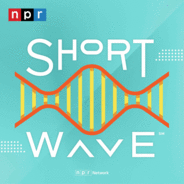Smallpox is a deadly virus. At one point, it killed almost 1 in 3 people who had it. Almost 300 million of those deaths were in the 20th century alone. It was extremely painful, highly contagious and many people thought it would be impossible to wipe out—until it was. On May 8, 1980. the 33rd World Health Assembly declared the world free of smallpox. This marked the first—and only—time a human disease was eradicated globally. Epidemiologist and host of the podcast Epidemic: Eradicating Smallpox Céline Gounder has been looking into this history. Today, she shares the intense journey to eradicate smallpox in Bangladesh (spoiler alert: there are literal speedboats) and reflects on what this history tells us about the importance of healthcare that meets the needs of individuals and communities today. Click here to check out the second season of Céline's podcast from NPR partner KFF Health News. What science story do you want to hear next on Short Wave? Email us at shortwave@npr.org.Learn more about sponsor message choices: podcastchoices.com/adchoicesNPR Privacy Policy

Wissenschaft & Technik
Short Wave Folgen
New discoveries, everyday mysteries, and the science behind the headlines — in just under 15 minutes. It's science for everyone, using a lot of creativity and a little humor. Join hosts Emily Kwong and Regina Barber for science on a different wavelength.If you're hooked, try Short Wave Plus. Your subscription supports the show and unlocks a sponsor-free feed. Learn more at plus.npr.org/shortwave
Folgen von Short Wave
1174 Folgen
-
Folge vom 30.08.2023'Speedboat Epidemiology': Eradicating Disease One Person At A Time
-
Folge vom 28.08.2023What Do We Do With Radioactive Wastewater?Workers in Japan started releasing treated radioactive water from the Fukushima Daiichi nuclear power plant into the Pacific Ocean on Thursday. Reactors at the plant began melting down after a 2011 earthquake and tsunami that hit the area. To stop the meltdown, plant workers flooded the reactors with water. But even now, when the plant is offline, the reactors need to be cooled. All that water—about 350 million gallons—is being stored on-site in over 1,000 tanks. And now, these tanks are almost full. Today on the show, host Regina G. Barber talks to NPR reporters Geoff Brumfiel and Kat Lonsdorf about the official plan for the radioactive wastewater, the science behind the release and why some are unhappy about it. What science story do you want to hear next on Short Wave? Email us at shortwave@npr.org.Learn more about sponsor message choices: podcastchoices.com/adchoicesNPR Privacy Policy
-
Folge vom 25.08.2023A Tale Of Two Lunar Landing AttemptsA journey through some of the latest science stories catching our eyes. This time, we consider the Russian and Indian lunar landing attempts, how scientists are reconstructing music from people's brains and lessons from wildfires that contributed to a mass extinction of North American land mammals 13,000 years ago. Learn more about sponsor message choices: podcastchoices.com/adchoicesNPR Privacy Policy
-
Folge vom 23.08.2023What Made Hilary Such A Weird StormOne name has been on millions of minds — and all over the news — in the past week: Hilary.It's been decades since a storm like this has hit Southern California, so even some scientists were shocked when they heard it was coming. In today's episode, Regina Barber talks to Jill Trepanier, who studies extreme climatic events — like hurricanes and climate change — at Louisiana State University. She tells us how we use science to predict events like this, and what Hilary and future storms may or may not tell us about the changing climate. Have an interesting science story to share? Email us at shortwave@npr.org.Learn more about sponsor message choices: podcastchoices.com/adchoicesNPR Privacy Policy
